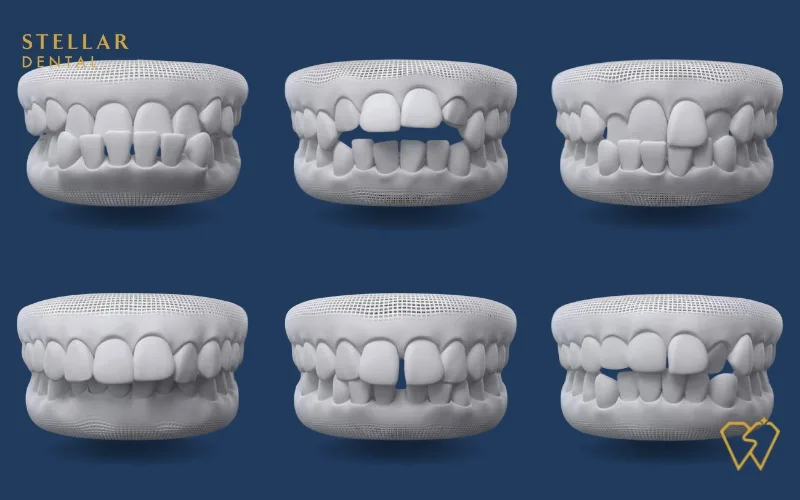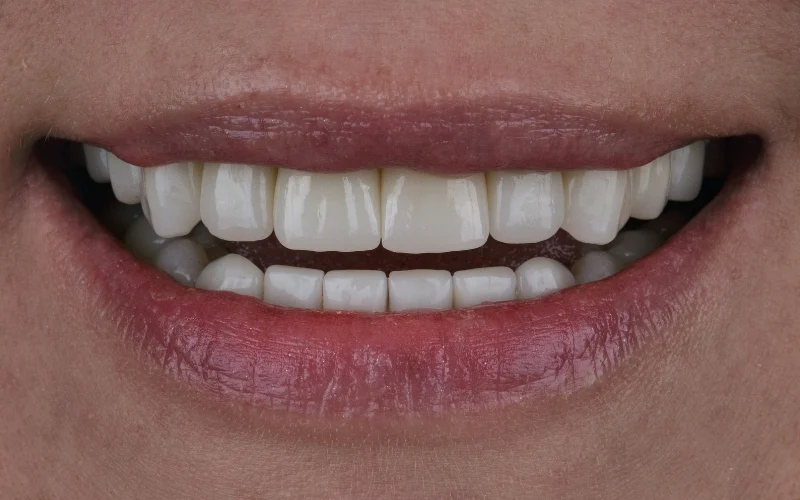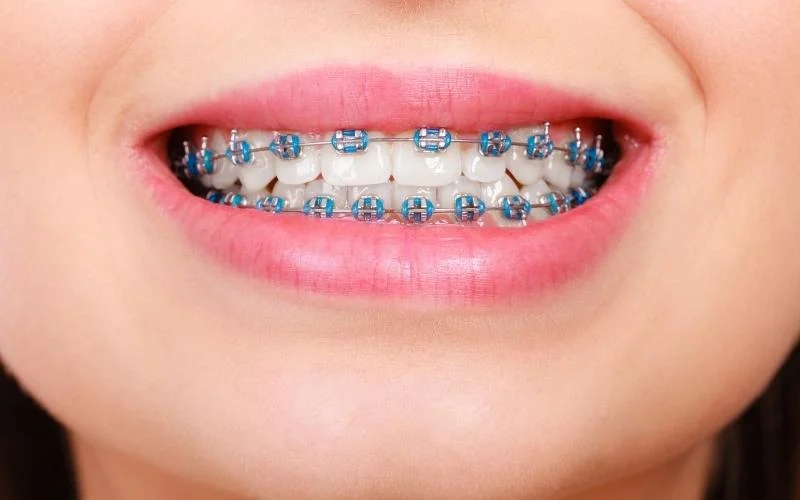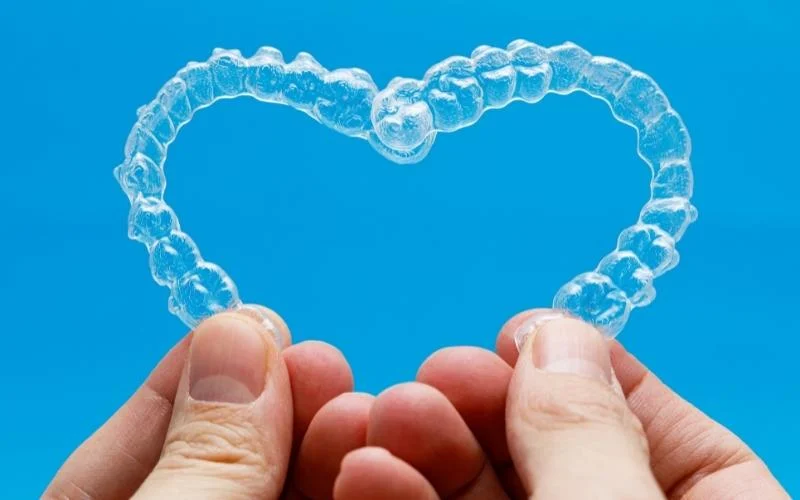Braces are an essential component of modern dentistry, playing an important role in treating bite issues and straightening crooked teeth. Braces come in different types, from traditional metal brackets and wires to the sleek and discreet designs available today. But who can benefit from them and what type of teeth conditions for braces are actually suitable?
You may be a candidate for braces if you have any dental issues affecting the appearance and function of your teeth. Braces are especially beneficial for children and teenagers whose teeth are still erupting, but adults can also benefit from them. This article will discuss the many dental conditions for which braces are suitable.
Overview
Crowded teeth, overbite, underbite, crossbite, and open bite are dental conditions that can affect a person’s smile. Crowded teeth can cause discomfort and trouble cleaning, while overbite and underbite can create biting and chewing issues. Crossbite and open bite can result in uneven tooth wear and jaw pain.
Braces are a common and effective treatment choice for these dental conditions. Braces can move teeth into normal alignment by providing mild pressure over time. Brackets, wires, and elastic bands gradually shift the teeth into the correct position. In addition to improving the smile, correcting dental issues with braces can improve oral function and health.
Braces are a personal choice; you must speak with a dentist or orthodontist to determine if they are the best solution for your specific dental condition.

Crowded teeth
Crowded teeth develop when there is insufficient space in the jaw for all of the teeth to align correctly, resulting in overlapping or misaligned teeth.
Causes
- Genetics
- Structure of the jaws
- Thumb-sucking habit
- Early loss of baby teeth
- Late eruption of adult teeth
- Use of pacifiers for an extended time
Signs
- Overlapping or crooked teeth
- Brushing and flossing problems
- Crowded or twisted teeth
- Biting or chewing problems
- Crowding of the molars and premolars
- Protruding front teeth
Impact on oral health
Crowded teeth can cause multiple oral health problems, including:
Decay: Crowded teeth are more difficult to clean and thus more prone to decay.
Gum disease: Crowded teeth can form pockets where germs can grow, raising the risk of gum disease.
Difficulty cleaning teeth: Crowded teeth make it difficult to clean them effectively, resulting in plaque and tartar buildup.
Tooth wear: Crowded teeth can result in abnormal bite patterns, tooth wear, and damage.
Crowded teeth can also have an impact on overall health and well-being. People with crowded teeth are generally self-conscious about their smiles, affecting their confidence and self-esteem. Overcrowded teeth can also impair speech and pronunciation, resulting in speech impairments. Crowded teeth can create jaw pain and tension, leading to chronic headaches.
How do braces fix crowded teeth?
Braces work by gradually shifting the teeth into their proper position, creating more space in the jaw, and improving tooth alignment. Extractions may be needed in severe cases to allow the teeth to align correctly. The degree of crowding determines how long it takes to treat with braces. However, most patients experience noticeable progress between 12-24 months. The orthodontist will evaluate the patient’s unique situation and recommend the best treatment plan.

Overbite
Overbites occur when the upper front teeth protrude beyond your lower teeth. It is also known as a deep bite. Overbite can be caused by the same factors that cause crowded teeth, excessive nail biting or teeth grinding.
Signs of overbite
The upper front teeth protrude beyond the lower teeth, making you have a deep bite and may cause your lower teeth to touch your palate when biting causing:
- Speech impediments
- Constant jaw pain and tension
- Wear and tear on the teeth
Effects of overbite on oral health
Overbite can have a significant impact on oral health. It can cause jaw pain and tension, resulting in chronic headaches and a reduced ability to participate in physical activities. When the upper front teeth cross paths with the lower teeth while biting, grinding, or chewing, tooth wear and damage can occur. Overbites can also affect speech and pronunciation, resulting in speech impediments that can be frustrating and embarrassing.
How do braces help with an overbite?
Braces treat overbite by gradually moving the teeth into the proper position and improving jaw alignment. The best braces for treating overbite will be based on the severity and complexity of the condition and the individual’s specific needs and preferences.
Traditional metal braces are the most common and traditional option, whereas ceramic braces are more aesthetically pleasing and blend in with the teeth. Lingual braces are virtually invisible because they are hidden behind the teeth. Clear aligners may be used to treat overbite in some cases. Clear aligners are custom-made removable trays that gently guide the teeth into proper alignment. This type of orthodontic treatment is popular due to its ease of use, comfort, and aesthetic appeal.

Underbite
It is a dental condition in which the lower jaw extends beyond the upper jaw, causing the lower front teeth to bite in front of the upper front teeth. It is also known as mandibular prognathism or lower facial prominence. This can lead to various oral health issues, including difficulty biting, chewing, and speaking.
Genetics, growth patterns, or incorrect jaw development can cause an underbite. It can also result from habits such as thumb-sucking, pacifier use, or bottle use for an extended time.
Signs of underbite
- The lower front teeth overlap the upper front teeth when biting.
- An excessive reverse overjet (the distance between the upper and lower front teeth)
- A protruding jaw
- An unbalanced facial appearance
Effects of underbite on oral health
Underbite can have the following effects on oral health:
- Jaw and facial pain and discomfort
- Increased possibility of tooth wear
- TMJ (temporomandibular joint) disorders
- Biting and chewing problems
- Speech problems
How do braces treat an underbite?
Braces can correct an underbite by repositioning the lower jaw and teeth, aligning the bite, and improving the overall appearance and function of the teeth. Traditional metal braces, ceramic braces, lingual braces, and clear braces are all options for correcting an underbite. The braces best suited for correcting underbite depends upon the patient’s specific needs and preferences. In severe cases, a combination of braces and surgery may be required to correct the condition completely.

Crossbite
Crossbite is a dental condition when the upper and lower teeth do not properly align when biting. This can cause a variety of oral health issues as well as discomfort when biting or chewing.
Signs of crossbite
- Teeth that appear crowded or misaligned
- Uneven wear on the teeth
- Jaw pain or discomfort when biting or chewing
- Speech difficulties
- Asymmetry of the face or changes in the shape of the face
Crossbite, if left untreated, can lead to additional dental issues such as jaw pain, tooth decay, and gum disease. Braces are an effective treatment option for crossbites because they can help realign the teeth and correct the bite.
How do braces help with a crossbite?
Correcting a crossbite with braces involves strategically moving teeth into their proper alignment. This is accomplished by applying gentle pressure with brackets, wires, and rubber bands.
The brackets are attached to the teeth and connected by a wire, which exerts a constant and controlled pressure that promotes tooth realignment. The wire is gradually tightened throughout treatment to keep the teeth moving until they are correctly positioned. In severe cases, orthodontic devices such as palatal expanders or face masks are used with braces to help the correction process.

Open bite
An open bite is a dental condition where the front or back teeth on the top and bottom do not meet when the jaw is closed. This creates a space between the teeth, causing problems with biting, chewing and speaking. Open bites are a type of malocclusion, or “bad bite,”: a group of dental issues that cause the teeth to align incorrectly, causing problems when biting down. An open bite can be challenging to treat, but a skilled, certified orthodontist can correct it with various braces options available.
Signs of open bite
An open bite is most noticeable when you cannot completely close your mouth so that your front or back teeth do not touch the top and bottom.
Other signs that you may have an open bite or another malocclusion:
- Inability to contact upper and lower teeth
- Chewing and swallowing difficulties
- Speech difficulties, such as a lisp
- Incorrect tooth alignment
- Pain during biting or chewing
- Difficulty chewing with front teeth
- Unattractive smile
How do braces treat an open bite?
Braces or clear aligners/insivalign are used to correct open bites by adjusting the position of the upper back teeth, lowering the front teeth, or combining both. Balancing the bite is the key to fixing the open bite, achieved by moving the teeth into their proper alignment. The orthodontist will determine whether to use braces or clear aligners depending on the severity of the patient’s oral condition.

Other teeth conditions suitable for braces
Spacing Issues: Spacing issues refer to gaps or spaces between the teeth. Various factors, such as genetics, missing teeth, or thumb-sucking habits, can contribute to these gaps. Braces can be used to close these gaps and improve the appearance of the smile as a whole.
Protrusion: Protrusion is a condition in which the upper front teeth stick out too far, making them more susceptible to injury and affecting the overall appearance. Braces can correct the appearance and function of your smile by repositioning the upper front teeth.
Malocclusion: A misalignment of the bite, which can include overbites, underbites, crossbites, and open bites, is referred to as malocclusion. Braces can realign the bite and improve the teeth and jaw function.
Asymmetry: It is a misalignment of the upper and lower jaws that causes a difference in the appearance of the face and bite. Braces help realign the jaw and improve the appearance and function of the bite.
Impact on Oral Health: Improper tooth and jaw alignment can cause various oral health issues, including difficulty chewing and speaking, gum disease, and tooth decay. Braces can improve patients’ oral health and well-being by correcting these dental issues with braces.
Braces options available
Braces come in different types. The most popular types include:
Metal braces
These traditional braces are the most common type and are made of stainless steel. They are the most visible of all braces options but also the most durable and effective.
Pros:
- Durable and long-lasting
- Effective in treating many orthodontic issues
- Affordable option
Cons:
- Highly visible
- Can be uncomfortable
- May cause mouth irritation
Ceramic braces
These are similar to traditional metal braces but are made of tooth-colored materials, making them less visible. They are also more fragile than metal braces, but they are an excellent choice for those who prefer a more cosmetic appearance.
Pros:
- Less noticeable than metal braces and can match the tooth color
- Effective in treating many orthodontic issues
Cons:
- Prone to staining and discoloration
- More fragile than metal braces
- May cause mouth irritation
Lingual braces
Lingual braces are placed on the inside of the teeth, making them invisible from the outside. They are a good option for those who want a more cosmetic appearance.
Pros:
- Virtually invisible
- Can treat a wide variety of orthodontic issues
Cons:
- More difficult to clean
- Can cause speech difficulties
- May cause mouth irritation
Clear braces
These braces are made of clear plastic and are designed to be almost invisible. They are popular for their cosmetic appearance and are appropriate for people with mild to moderate orthodontic issues.
Pros:
- Made of clear, plastic material making it less noticeable
- Removable hence you will be able to eat and brush like usual without braces
- Effective in treating mild to moderate orthodontic issues
Cons:
- Need high compliance from the patient as it’s removable
- May become discolored if not cleaned properly
Learn about our braces treatments here:
Conclusion
In conclusion, tooth misalignment and other dental issues can significantly impact oral health and self-esteem. With the wide range of braces options available, including metal, ceramic, lingual, and clear braces, there is a solution for every patient’s unique needs. Patients must consult a licensed orthodontist for a thorough diagnosis and personalized treatment plan.
If you’re looking for a place to receive top-notch dental care for your misaligned teeth and other oral health issues, look no further than Stellar Dental. Our skilled and experienced team will assess your specific needs and recommend the best treatment plan to achieve a healthy, beautiful smile. Book an appointment here.








